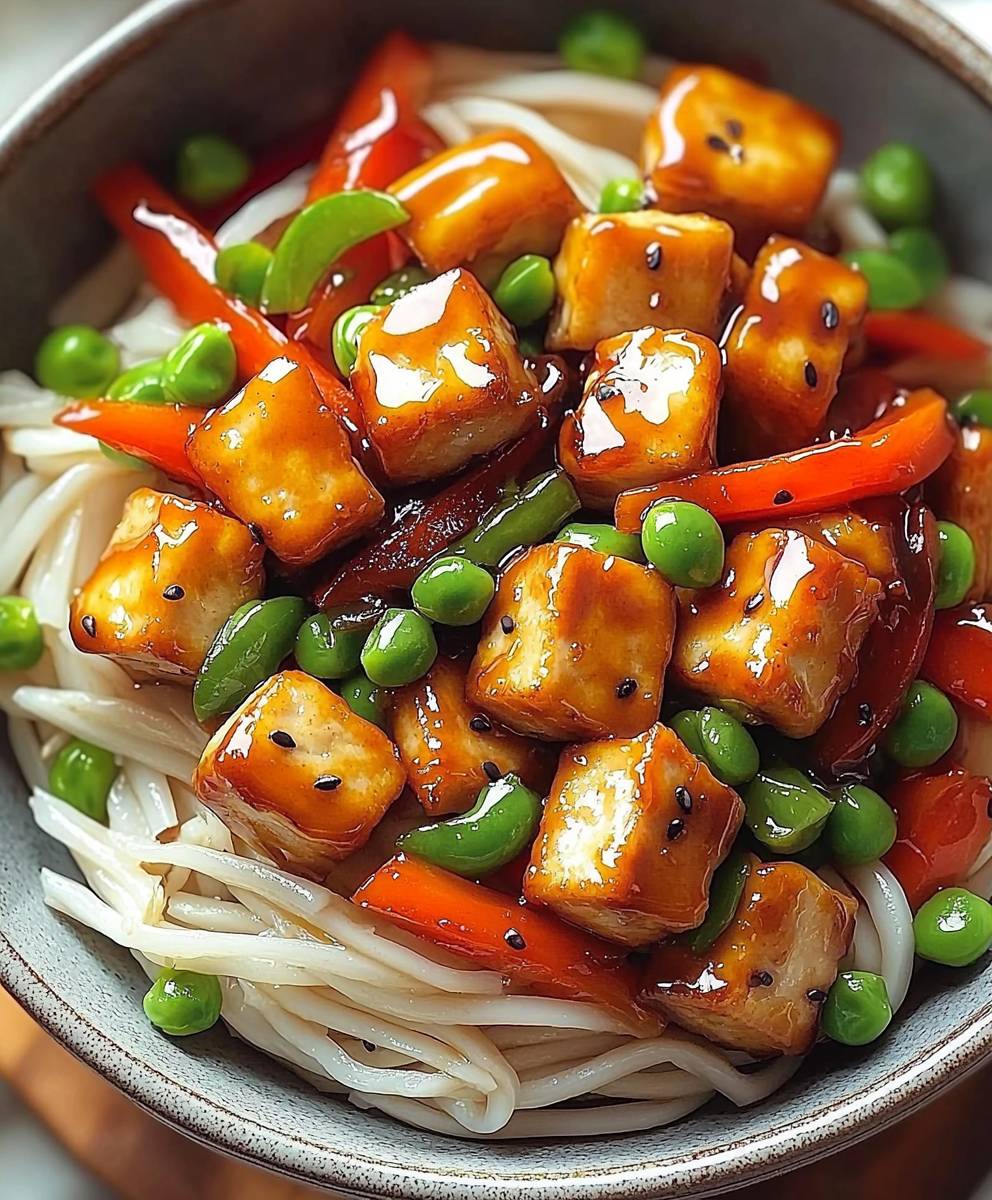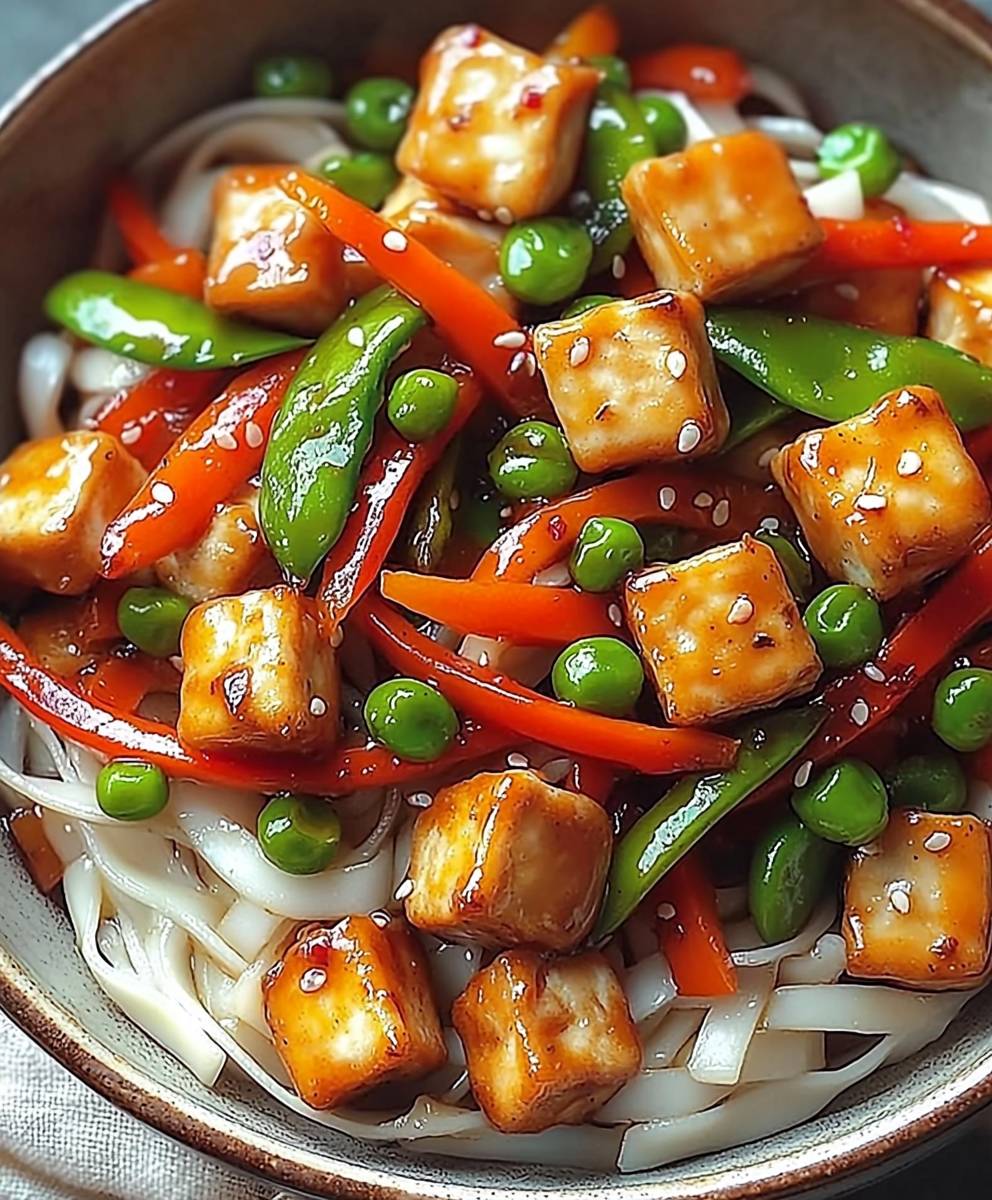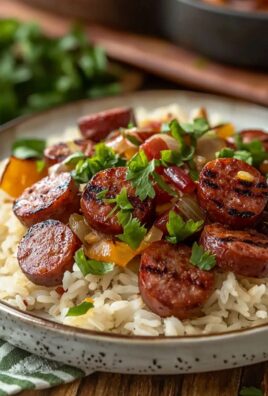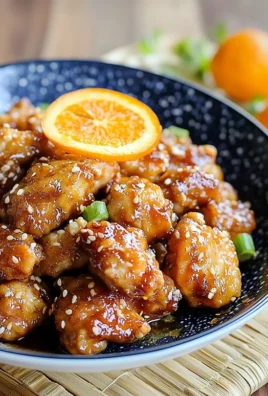Healthy Stir Fry Sauces are the unsung heroes of quick, delicious, and nutritious weeknight meals. Forget those sodium-laden, sugar-packed bottled sauces from the grocery store! I’m here to show you how incredibly easy it is to whip up your own vibrant and flavorful stir fry sauces that will transform your vegetables and proteins into culinary masterpieces.
Stir-frying, a cooking technique deeply rooted in Chinese culinary tradition, has been embraced globally for its speed and ability to retain the nutrients of fresh ingredients. The key to a truly exceptional stir-fry lies in the sauce. A well-balanced sauce not only coats every morsel with deliciousness but also ties all the flavors together, creating a harmonious and satisfying dish.
But let’s be honest, many commercially available stir fry sauces are loaded with unhealthy additives. That’s where these healthy stir fry sauces come in! People love stir-fries because they are quick, versatile, and can be adapted to use whatever vegetables and proteins you have on hand. By creating your own sauce, you control the ingredients, ensuring a healthier and tastier meal. Get ready to ditch the store-bought stuff and embark on a flavorful journey to create stir-fries that are both good for you and incredibly delicious!
Ingredients:
- For the Stir-Fry:
- 1 pound boneless, skinless chicken breasts, cut into bite-sized pieces
- 1 tablespoon olive oil (or avocado oil)
- 1 red bell pepper, thinly sliced
- 1 yellow bell pepper, thinly sliced
- 1 medium onion, thinly sliced
- 2 cups broccoli florets
- 1 cup sliced carrots
- 1 cup snow peas
- 2 cloves garlic, minced
- 1 inch ginger, grated
- 1/2 cup sliced mushrooms (optional)
- Cooked brown rice or quinoa, for serving
- For the Healthy Stir-Fry Sauce Options:
- Option 1: Sesame Ginger Sauce
- 1/4 cup low-sodium soy sauce (or tamari for gluten-free)
- 2 tablespoons rice vinegar
- 1 tablespoon sesame oil
- 1 tablespoon honey (or maple syrup)
- 1 tablespoon grated fresh ginger
- 1 clove garlic, minced
- 1 teaspoon cornstarch (or arrowroot powder)
- 1/4 cup water
- 1/2 teaspoon red pepper flakes (optional)
- Option 2: Peanut Sauce
- 1/4 cup natural peanut butter
- 2 tablespoons low-sodium soy sauce (or tamari for gluten-free)
- 2 tablespoons rice vinegar
- 1 tablespoon honey (or maple syrup)
- 1 tablespoon sesame oil
- 1 tablespoon lime juice
- 1 clove garlic, minced
- 1/4 cup hot water (or more, to reach desired consistency)
- 1/2 teaspoon red pepper flakes (optional)
- Option 3: Lemon Garlic Sauce
- 1/4 cup low-sodium chicken broth
- 2 tablespoons lemon juice
- 1 tablespoon low-sodium soy sauce (or tamari for gluten-free)
- 1 tablespoon honey (or maple syrup)
- 2 cloves garlic, minced
- 1 teaspoon cornstarch (or arrowroot powder)
- 1/4 teaspoon black pepper
- 1 tablespoon olive oil
Preparing the Chicken and Vegetables:
- Prepare the Chicken: Pat the chicken pieces dry with paper towels. This helps them brown nicely in the stir-fry. Season the chicken with a pinch of salt and pepper. You can also add a little garlic powder or onion powder for extra flavor if you like.
- Prep the Vegetables: Wash and chop all the vegetables according to the ingredient list. Having everything prepped and ready to go before you start cooking is crucial for a successful stir-fry. Stir-fries cook quickly, so you won’t have time to chop vegetables while the chicken is cooking.
Making the Healthy Stir-Fry Sauces:
Now, let’s make those delicious and healthy stir-fry sauces! You can choose one or try them all they’re all fantastic.
- Sesame Ginger Sauce: In a small bowl, whisk together the low-sodium soy sauce (or tamari), rice vinegar, sesame oil, honey (or maple syrup), grated ginger, minced garlic, cornstarch (or arrowroot powder), water, and red pepper flakes (if using). Make sure the cornstarch is fully dissolved to avoid clumps in the sauce. Set aside.
- Peanut Sauce: In a separate small bowl, whisk together the natural peanut butter, low-sodium soy sauce (or tamari), rice vinegar, honey (or maple syrup), sesame oil, lime juice, minced garlic, and hot water. Add more hot water, one tablespoon at a time, until the sauce reaches your desired consistency. Some people prefer a thicker sauce, while others like it thinner. Add red pepper flakes if you want a little heat. Set aside.
- Lemon Garlic Sauce: In a small bowl, whisk together the low-sodium chicken broth, lemon juice, low-sodium soy sauce (or tamari), honey (or maple syrup), minced garlic, cornstarch (or arrowroot powder), black pepper, and olive oil. Ensure the cornstarch is fully dissolved. Set aside.
Cooking the Stir-Fry:
- Heat the Oil: Heat the olive oil (or avocado oil) in a large wok or skillet over medium-high heat. Make sure the wok or skillet is hot before adding the chicken. A hot surface will help the chicken brown properly and prevent it from sticking.
- Cook the Chicken: Add the chicken pieces to the hot wok or skillet in a single layer. Avoid overcrowding the pan, as this will lower the temperature and cause the chicken to steam instead of brown. If necessary, cook the chicken in batches. Cook the chicken for about 5-7 minutes, or until it is cooked through and lightly browned on all sides. Remove the chicken from the wok or skillet and set aside.
- Sauté the Aromatics: Add the sliced onion, minced garlic, and grated ginger to the wok or skillet. Sauté for about 1-2 minutes, or until the onion is softened and fragrant. Be careful not to burn the garlic.
- Add the Vegetables: Add the sliced bell peppers, broccoli florets, sliced carrots, snow peas, and sliced mushrooms (if using) to the wok or skillet. Stir-fry for about 5-7 minutes, or until the vegetables are tender-crisp. You want the vegetables to be cooked through but still have a little bit of crunch.
- Combine and Simmer: Return the cooked chicken to the wok or skillet with the vegetables. Pour your chosen stir-fry sauce over the chicken and vegetables. Stir well to coat everything evenly with the sauce. Bring the sauce to a simmer and cook for about 1-2 minutes, or until the sauce has thickened slightly.
Serving:
- Serve Immediately: Serve the healthy chicken stir-fry immediately over cooked brown rice or quinoa.
- Garnish (Optional): Garnish with sesame seeds, chopped green onions, or a sprinkle of red pepper flakes for extra flavor and visual appeal.
Tips for a Perfect Stir-Fry:
- High Heat is Key: Stir-fries are best cooked over high heat. This helps the ingredients cook quickly and evenly, and it also gives them a nice char.
- Don’t Overcrowd the Pan: Overcrowding the pan will lower the temperature and cause the ingredients to steam instead of brown. Cook in batches if necessary.
- Prep Everything in Advance: Stir-fries cook quickly, so it’s important to have all your ingredients prepped and ready to go before you start cooking.
- Use Fresh Ingredients: Fresh ingredients will give your stir-fry the best flavor.
- Adjust the Sauce to Your Taste: Feel free to adjust the amount of honey, soy sauce, or red pepper flakes in the sauce to suit your personal preferences.
- Add Protein Variety: Feel free to substitute the chicken with tofu, shrimp, beef, or pork. Adjust cooking times accordingly.
- Vegetable Substitutions: Don’t be afraid to experiment with different vegetables. Some other great options include bok choy, bean sprouts, water chestnuts, and snap peas.
Making it Vegetarian/Vegan:
This recipe is easily adaptable for vegetarian or vegan diets. Simply substitute the chicken with tofu or tempeh. For the peanut sauce, ensure your peanut butter is vegan-friendly (some brands may contain honey). The other sauces are naturally vegan-friendly if you use maple syrup instead of honey.
Storage and Reheating:
Leftover stir-fry can be stored in an airtight container in the refrigerator for up to 3-4 days. To reheat, simply microwave until heated through, or reheat in a skillet over medium heat. Add a splash of water or broth if the stir-fry seems dry.
Nutritional Information (Approximate, per serving):
The nutritional information will vary depending on the specific ingredients used and the portion size. However, a general estimate for one serving of this healthy chicken stir-fry (using the Sesame Ginger Sauce and served over brown rice) is:
- Calories: 400-500
- Protein: 30-40g
- Fat: 15-25g
- Carbohydrates: 40-50g
This recipe is a great source of protein, fiber, and vitamins. It’s also low in sodium and added sugar

Conclusion:
This isn’t just another stir-fry sauce recipe; it’s your passport to weeknight dinners that are both incredibly delicious and genuinely good for you. We’ve banished the excess sodium, hidden sugars, and questionable ingredients often lurking in store-bought options, replacing them with vibrant, fresh flavors that will make your taste buds sing. This is why I truly believe this recipe for healthy stir fry sauces is a must-try for anyone looking to elevate their home cooking.
Think about it: no more label-reading anxiety, no more feeling guilty about indulging in your favorite Asian-inspired dishes. Instead, you’ll have the power to create a variety of stir-fries, each bursting with unique and wholesome goodness. From the tangy and bright citrus ginger sauce to the rich and savory umami bomb, there’s a flavor profile to satisfy every craving.
But the best part? The versatility! Don’t limit yourself to just stir-fries. These sauces are fantastic as marinades for grilled chicken, fish, or tofu. Drizzle them over roasted vegetables for an extra layer of flavor. Use them as dipping sauces for spring rolls or dumplings. The possibilities are truly endless.
For a quick and easy weeknight meal, try the sesame garlic sauce with some chicken breast, broccoli florets, and bell peppers, served over brown rice. If you’re feeling adventurous, the spicy peanut sauce is incredible with shrimp, noodles, and a sprinkle of chopped peanuts. And for a vegetarian delight, toss some tofu, mushrooms, and bok choy in the ginger citrus sauce and serve over quinoa.
Want to take things to the next level? Consider these variations:
* Spice it up: Add a pinch of red pepper flakes or a dash of sriracha to any of the sauces for an extra kick.
* Make it sweeter: A touch of honey or maple syrup can balance out the savory flavors.
* Add some depth: A teaspoon of toasted sesame oil can add a nutty richness.
* Go nutty: For the peanut sauce, try using almond butter or cashew butter for a different flavor profile.
* Fresh herbs: Stir in some chopped cilantro, basil, or mint for a burst of freshness.
I’ve poured my heart and soul into developing these recipes, and I’m confident that you’ll love them as much as I do. They’re simple to make, packed with flavor, and a much healthier alternative to store-bought options.
So, what are you waiting for? Grab your ingredients, fire up your wok (or skillet!), and get ready to create some culinary magic. I’m so excited for you to experience the joy of making your own healthy stir fry sauces.
And most importantly, I want to hear about your experience! Did you try one of the recipes as is, or did you put your own spin on it? What did you serve it with? What did your family think? Share your photos, comments, and variations in the comments section below. Your feedback is invaluable, and it helps inspire others to try these recipes and discover the joy of healthy, homemade cooking. Let’s build a community of flavor enthusiasts, one delicious stir-fry at a time! Happy cooking!
Healthy Stir Fry Sauces: Top Picks & Easy Recipes
A quick and healthy chicken stir-fry packed with colorful vegetables and your choice of delicious homemade sauce: Sesame Ginger, Peanut, or Lemon Garlic. Perfect for a weeknight meal!
Ingredients
- 1 pound boneless, skinless chicken breasts, cut into bite-sized pieces
- 1 tablespoon olive oil (or avocado oil)
- 1 red bell pepper, thinly sliced
- 1 yellow bell pepper, thinly sliced
- 1 medium onion, thinly sliced
- 2 cups broccoli florets
- 1 cup sliced carrots
- 1 cup snow peas
- 2 cloves garlic, minced
- 1 inch ginger, grated
- 1/2 cup sliced mushrooms (optional)
- Cooked brown rice or quinoa, for serving
- 1/4 cup low-sodium soy sauce (or tamari for gluten-free)
- 2 tablespoons rice vinegar
- 1 tablespoon sesame oil
- 1 tablespoon honey (or maple syrup)
- 1 tablespoon grated fresh ginger
- 1 clove garlic, minced
- 1 teaspoon cornstarch (or arrowroot powder)
- 1/4 cup water
- 1/2 teaspoon red pepper flakes (optional)
- 1/4 cup natural peanut butter
- 2 tablespoons low-sodium soy sauce (or tamari for gluten-free)
- 2 tablespoons rice vinegar
- 1 tablespoon honey (or maple syrup)
- 1 tablespoon sesame oil
- 1 tablespoon lime juice
- 1 clove garlic, minced
- 1/4 cup hot water (or more, to reach desired consistency)
- 1/2 teaspoon red pepper flakes (optional)
- 1/4 cup low-sodium chicken broth
- 2 tablespoons lemon juice
- 1 tablespoon low-sodium soy sauce (or tamari for gluten-free)
- 1 tablespoon honey (or maple syrup)
- 2 cloves garlic, minced
- 1 teaspoon cornstarch (or arrowroot powder)
- 1/4 teaspoon black pepper
- 1 tablespoon olive oil
Instructions
- Prepare the Chicken: Pat the chicken pieces dry with paper towels. Season with a pinch of salt and pepper (and garlic or onion powder, if desired).
- Prep the Vegetables: Wash and chop all the vegetables according to the ingredient list.
- Make the Sauce (Choose One):
- Sesame Ginger Sauce: In a small bowl, whisk together soy sauce (or tamari), rice vinegar, sesame oil, honey (or maple syrup), ginger, garlic, cornstarch (or arrowroot powder), water, and red pepper flakes (if using). Set aside.
- Peanut Sauce: In a small bowl, whisk together peanut butter, soy sauce (or tamari), rice vinegar, honey (or maple syrup), sesame oil, lime juice, garlic, and hot water. Add more hot water, 1 tablespoon at a time, until desired consistency is reached. Add red pepper flakes if desired. Set aside.
- Lemon Garlic Sauce: In a small bowl, whisk together chicken broth, lemon juice, soy sauce (or tamari), honey (or maple syrup), garlic, cornstarch (or arrowroot powder), black pepper, and olive oil. Set aside.
- Heat the Oil: Heat olive oil (or avocado oil) in a large wok or skillet over medium-high heat.
- Cook the Chicken: Add the chicken pieces to the hot wok or skillet in a single layer. Cook for 5-7 minutes, or until cooked through and lightly browned on all sides. Remove from the wok and set aside.
- Sauté the Aromatics: Add the sliced onion, minced garlic, and grated ginger to the wok or skillet. Sauté for 1-2 minutes, or until the onion is softened and fragrant.
- Add the Vegetables: Add the sliced bell peppers, broccoli florets, sliced carrots, snow peas, and sliced mushrooms (if using) to the wok or skillet. Stir-fry for 5-7 minutes, or until the vegetables are tender-crisp.
- Combine and Simmer: Return the cooked chicken to the wok or skillet with the vegetables. Pour your chosen stir-fry sauce over the chicken and vegetables. Stir well to coat everything evenly with the sauce. Bring the sauce to a simmer and cook for 1-2 minutes, or until the sauce has thickened slightly.
- Serve: Serve immediately over cooked brown rice or quinoa. Garnish with sesame seeds, chopped green onions, or red pepper flakes (optional).
Notes
- High Heat is Key: Stir-fries are best cooked over high heat.
- Don’t Overcrowd the Pan: Cook in batches if necessary.
- Prep Everything in Advance: Have all ingredients prepped before starting.
- Use Fresh Ingredients: For the best flavor.
- Adjust the Sauce to Your Taste: Adjust honey, soy sauce, or red pepper flakes to your preference.
- Protein Variety: Substitute chicken with tofu, shrimp, beef, or pork. Adjust cooking times accordingly.
- Vegetable Substitutions: Experiment with bok choy, bean sprouts, water chestnuts, and snap peas.
- Vegetarian/Vegan: Substitute chicken with tofu or tempeh. Use maple syrup instead of honey.
- Storage and Reheating: Store leftovers in an airtight container in the refrigerator for up to 3-4 days. Reheat in the microwave or skillet. Add a splash of water or broth if dry.




